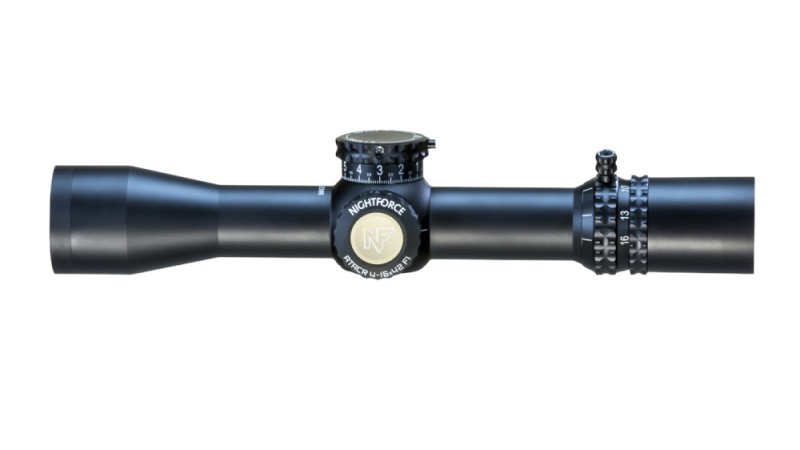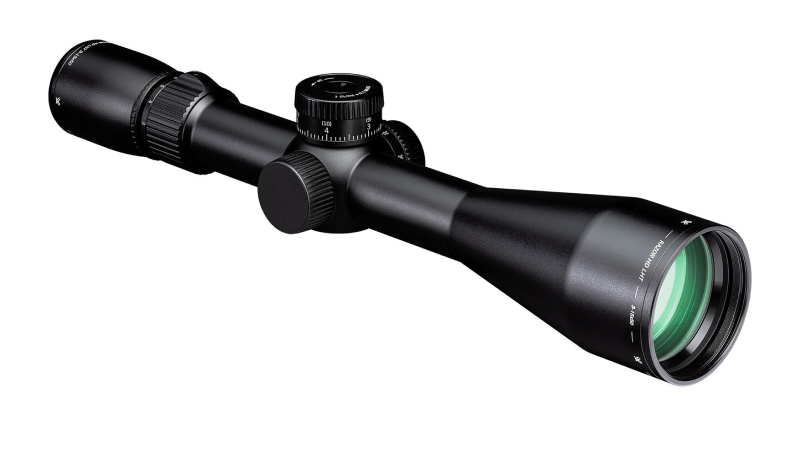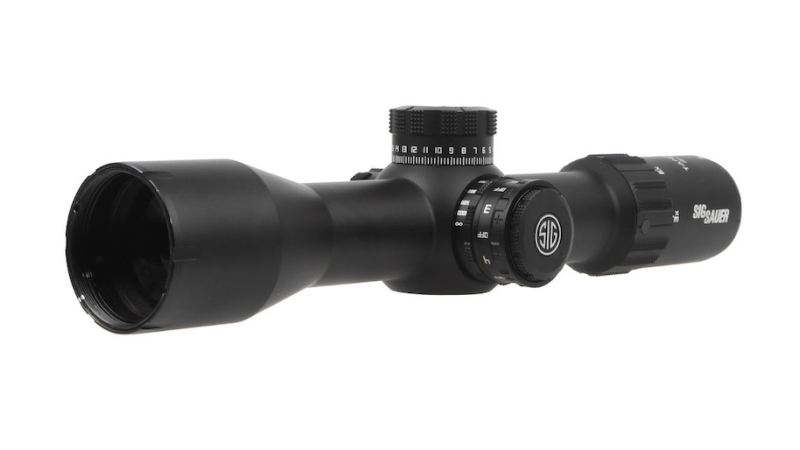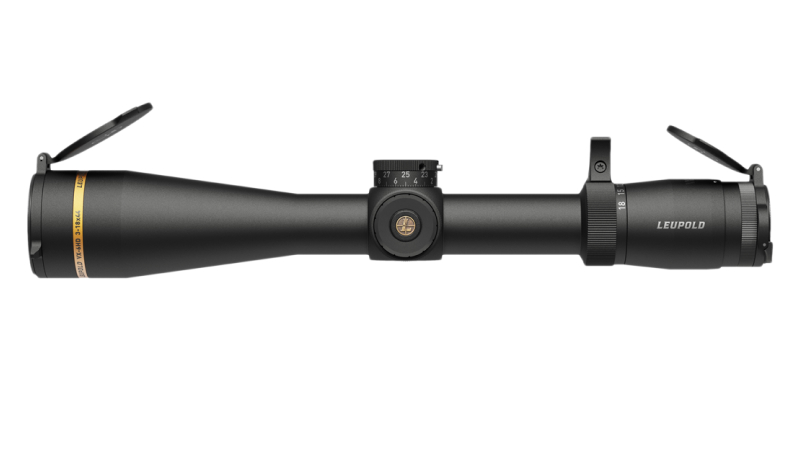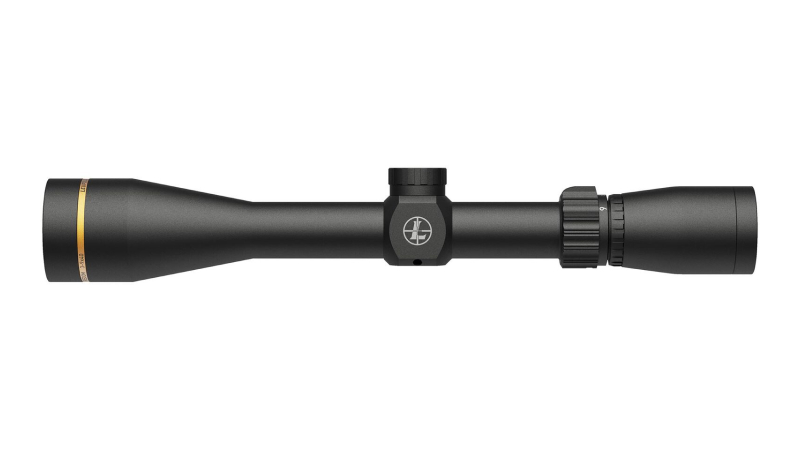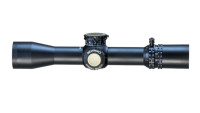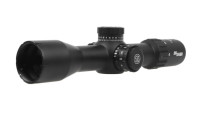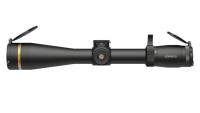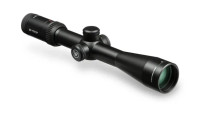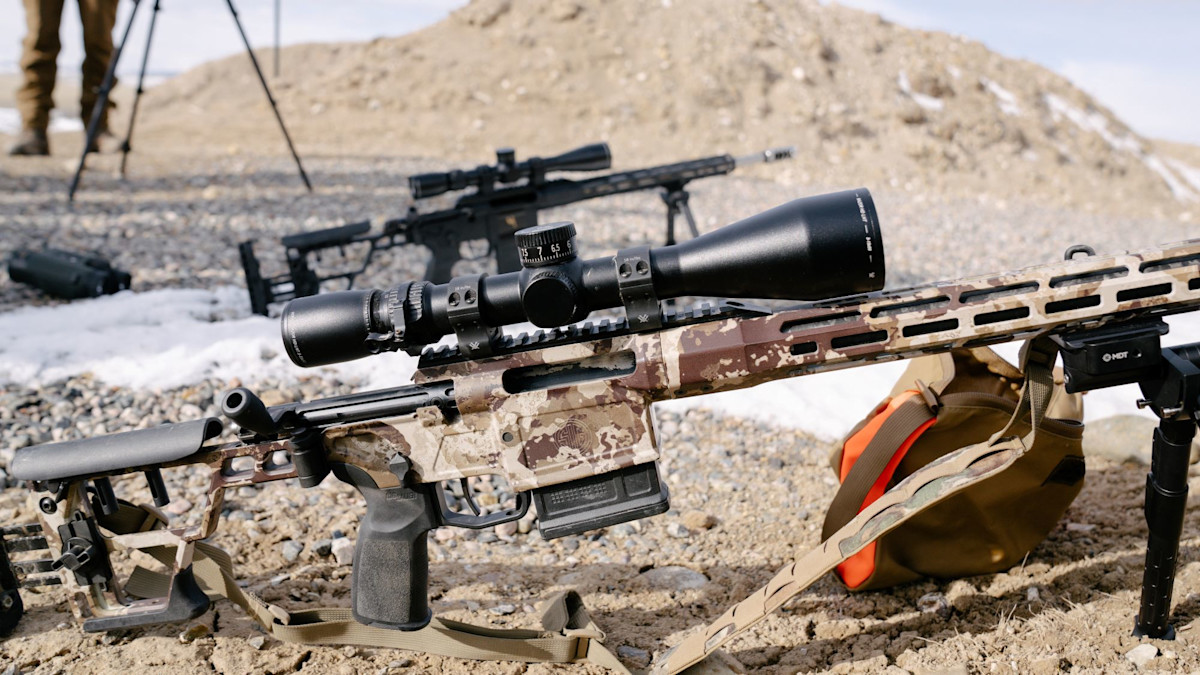
For the past several years, I’ve had the opportunity to try out a fair number of different scopes through competition, hunting, and helping the MeatEater crew dial in their kits. For those few scopes I haven’t used personally, I also have data points from folks who spend a lot of time behind a rifle.
Someone (cough, Jordan Sillars, cough) could publish an entire series of articles on what type of scopes are best for different hunting situations. But this article will focus on five of the best overall options from four different brands and cover factors like magnification, focal planes, and general configuration.
I'm also including 2 budget scope options. While I wouldn't consider these the "best," they're great options if you're looking to get into hunting. They are the Leupold VX-Freedom 3-9X40 and the Vortex Viper HS 4-16X44.
There are tons of other quality rifle scopes on the market, but after reading this article you should have a good sense of what you want, even if it’s not on the list.
The scopes I am going to review (all of which I own) are the Nightforce ATACR 4-16x42 MOAR F-1, Vortex Razor HD LHT 3-15x42, Sig Sauer Tango DMR 3-18, Sig Sauer Sierra6BDX 3-18x44, Leupold VX-6HD 3-18x44 CDS TMOA , and the Vortex Razor HD LHT 3-15x42.
Now, I know what you're thinking: there’s an outlier on this list in terms of price (the Nightforce). But I look for a certain magnification range and weight in a hunting scope, and from there I simply choose the best offerings I can get my hands on.
SCOPES REVIEWED
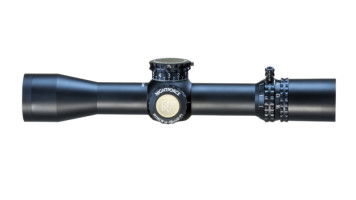 Nightforce ATACR 4-16x42
|
 Vortex Razor HD LHT 3-15x42 |
 Sig Sauer Tango DMR 3-18 |
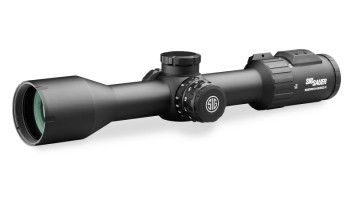 Sig Sauer Sierra6BDX 3-18x44 |
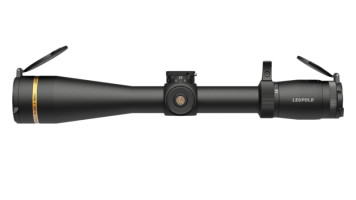 Leupold VX-6HD 3-18x44
|
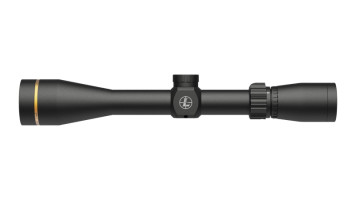 LEUPOLD VX-FREEDOM 3-9X40
|
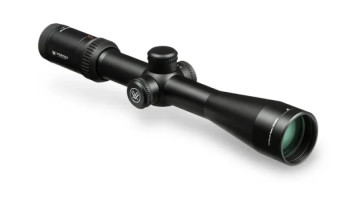 Vortex Viper HS 4-16X44
|
|
|---|---|---|---|---|---|---|---|
| Pros | Durability, Turrets, Glass | Weight, Zero Stop, Eye Relief | Durability, Cost, Turret | BDX System, Cost, Reticle Selection | Glass, Eye Relief, Weight | Cost, Eye Relief, Leupold Gold Ring | Cost, Warranty, Weight |
| Cons | Eye Relief, Cost, Weight | Durability, Turrets, Magnification Adjustment | Reticle, Parallax Adjustment, Windage Turret | BDX System, Glass, Durability | Price, Durability, Zero Slip | Glass, Durability, Parallax Adjustment | Durability, Glass, Turrets |
| Price | $2,500* | $1,300* | $1,300* | $1,030* | $2100* | $299* | $550* |
| Product Notes | Product Notes | Product Notes | Product Notes | Product Notes | Product Notes | Product Notes |
PRODUCT NOTES
Pros
• Durability/Quality: To say the Nightforce ATACR is durable is like saying Steven Rinella likes mule deer. Nightforce takes durability and quality to the next level, and that means peace of mind in the backcountry when your rifle takes a tumble. The zero is there for life!
• Turrets: Not all turrets are created equal, and Nightforce is at the top of the list. If you haven’t spun a turret on an ATACR, go to the store right now–it’s life changing.
• Glass: The glass is exceptional and keeps you in the field during low light. It’s always clear, never fogs, and makes judging critters, shots, or even wind (dial back your parallax just a bit to see the heat waves) incredibly easy.
Cons
• Eye Relief: I have found the ATACR (and most Nightforce scopes) to have a little trickier eye relief than other optics. The window is tight, and if you're a newer hunter, it can be a bit of a pain.
• Cost: This is the most expensive scope on the list by about $400. You get what you pay for, but in this case you pay a lot. Justify it as a centerpiece to the dining room table, and it’s money well spent.
• Weight: Durability comes at a cost, and the ATACR outweighs everything on this list by at least 7 ounces. I run a little heavier setup anyway, but if you like to turn hunts into ultra-marathons like Janis Putelis, the weight will catch up with you.
Pros
• Weight: The LHT is one of the lightest optics on this list while still giving you the benefits of exposed turrets and parallax adjustment. If you want to trim some ounces while maintaining long range accuracy, this scope will get you there.
• Zero-stop: Some scopes are a pain to sight in and set a zero stop (like the ATACR), but the LHT is not one of them. This little scope is incredibly easy to adjust, set zero, and make sure you don’t spin it too many revs the wrong direction.
• Eye Relief: The LHT is easy to sit behind. The window for eye relief is wide, and I’ve found newer hunters can get on target quicker because of it. Vortex definitely designed this as a hunting-focused optic.
Cons
• Durability: Vortex has an unprecedented warranty, thankfully. That isn’t to say Vortex optics are going to break, but I have seen the tubes on these scopes get beat up a little easier than others, which is also a side effect of trimming back on weight.
• Turrets: I have never seen a Vortex turret fail, but they don’t feel super reassuring. They’re a little sloppy, and don’t indicate when you’ve spun the turret more than one revolution. This is easy to quickly check by spinning the turret all the way down again, but on the fly it takes precious time.
• Magnification adjustment: I don’t know what it is, but changing the magnification on the LHT without a throw-lever is a major pain in the ass. It’s ultra-stiff and can cause a lot of unwanted movement in the sagebrush as you are trying to zoom in on an antelope (speaking from experience here).
Pros
• Durability: The DMR is a slightly beefier version of Vortex’s LHT, and you can feel it when held side by side. The DMR only weighs four ounces more than the LHT, but overall seems to handle impact, maintain zero, and provide a better overall sense of durability than its lighter counterparts.
• Cost: $1299, this is a great buy for the quality. Again, we aren’t talking diamondback pricing here, but for the entire package, $1299 is a very compelling price.
• Turret: For the lightweight category, I actually really liked the turrets on this optic. They have a similar zero-lock style to the Leupold scopes, and are generally pretty smooth. Further, and more importantly, I have yet to find any zero creep after jamming these turrets for over 1,000 rounds.
Cons
• Reticle: The reticle on this optic is really small. I am fortunate to have pretty good eyes, but I can certainly understand how some folks would struggle to see this reticle.
• Parallax Adjustment: This may be a unit specific issue, but I’ve found the parallax adjustment to be relatively stiff - not ideal for staying behind the glass. It’s also tucked in behind the reticle illumination system, which makes it a little more awkward to manipulate.
• Windage Turret: Like several other optics on this review, the DMR’s windage turret has a cap on it. Rarely do I ever dial wind, but when I am with a newer shooter or shooting steel movers, I like to take all of the guesswork out of the situation - or at least have the opportunity to.
Pros
• BDX System: To be clear, the BDX system is also purposefully in the cons list. But for pros, I have found the BDX system to be fast, reliable, and downright accurate. Shooting targets out to 1,000 yards is no problem, and as long as you have your rangefinder paired to the optic, the days of calculating holdover or referencing a drop chart are a thing of the past.
• Cost: The Sierra6 is the least expensive optic on this list, but it still carries a lot of quality for most hunters. If you spent all your cash on brass or the rangefinder to go with it, the Sierra6 is a great option.
• Reticle Selection: The Sig Sauer app allows you to make custom holdover markers in your reticle. This is perfect for someone who already has a rangefinder that doesn’t pair with the scope but is still looking for yardage holdover indicators.
Cons
• BDX System: As stated above, the BDX system is great for someone who wants to pair a rangefinder, but the lack of exposed turrets and reliance on your own rangefinder isn’t ideal in my opinion. Janis Putelis loves this system, but I have yet to fully trust it for long(ish) range shooting.
• Glass: Out of all the optics on this list, the Sierra6 has the least impressive glass quality. It still works great, and is only noticeable in certain conditions, but in low light you will notice it.
• Durability: This scope is by no means cheap, but it doesn’t seem to take the abuse that some of the other optics on this list will handle. I put it in a very similar lane with the LHT.
Pros
• Glass: This optic is incredibly clear–some would say as clear as it gets. Frankly, when glass quality gets to this level, it’s really hard to tell the difference between this and an ATACR. But for $400 less, it’s really nice.
• Eye Relief: This is where Leupold optics shine. The eye relief and quick focus on the VX-6 are fantastic. It’s fast, easy to get on target, and easy to stay on target through variable zoom.
• Weight: The VX-6 comes in right around the same weight as the LHT, but the VX-6 has a little better turret system. The VX-6 is a more expensive optic, so it’s up to you to figure out what works for you.
Cons
• Price: I didn’t want to put this on here, as this isn’t a price competition, but it should be considered. Depending on where you find them, the VX-6 can come in close to $800 more than the LHT. If you’re watching the budget, the LHT or even the VX5 might be your solution.
• Durability: Saving weight comes at a cost, and I’ve found the tubes to be a little easier to bang up on the VX-6’s or 5’s. Again, I’m not talking Nikon Buckmasters durability class, but I wouldn’t use the VX-6 as a tent-stake hammer.
• Zero-Slip: I don’t want to lean too much on personal experiences with a small sample size, but I have seen a couple cases where the VX-6 seemed to lose zero as turrets were used throughout competitions and at the range. Both cases were under extreme situations relative to hunting, but I can’t overlook what I saw.
Pros
• Cost: This isn’t a “Best Scope for the Money” article, but cost still needs to be a consideration on this list, and this optic provides great quality at a very approachable price point.
• Eye Relief: Whether someone is just starting out or they’re an experienced marksman, we all like forgiving eye relief. This optic offers a clean sight window from a variety of perspectives, even if the position isn’t perfect.
• Leupold Gold Ring: This is a less expensive optic, but at the end of the day it has a gold ring on it which means something in this industry. Leupold is a quality brand with an incredible reputation.
Cons
• Glass: The glass quality is good relative to price, but compared to the other optics on this list, prepare to compromise in low-light situations.
• Durability: Again, for the price, great product! But relative to the other optics on this list the VX-Freedom just isn’t a highly durable product. Check zero, take care of your rifle, and this optic will last a long time.
• Parallax Adjustment: This falls on the cons list because, well, there isn’t one. Running a riflescope without parallax is a compromise in both precision and effective range. A set parallax at “hunting ranges” will give you a happy medium, but ultimately it’s a compromise in optimal effectiveness at every range.
Pros
• Cost: It’s hard to talk about the Vortex Viper without talking about affordability. At $549 or under, this optic opens up the budget a lot for extra ammo and targets to play with at the range.
• Warranty: It’s a relatively inexpensive optic compared to the rest of the list, but that doesn’t mean you will have to keep buying them when one gets banged up. With a lifetime warranty, this little optic will remain a sound purchase for a long time.
• Weight: If you are looking for a system that is easy to handle, this optic will keep weight down—a lot.
Cons
• Durability: The Viper is a durable optic and comes with a great warranty, but relative to other optics on this list it’s going to get banged up a little easier.
• Glass: This is great glass for the price, but it’s not great glass compared to the upper echelon of optics. It’s all trade-offs when comparing a $500 optic to a $3000 optic.
• Turretts: It goes without saying that this scope doesn’t have exposed turrets, but I have found the turrets track well while zeroing.
LAST SHOT
Similar to my article about the best hunting bipod, I don’t want to end this with some lame-ass conclusion that ultimately doesn’t tell you anything. I like the ATACR the most. The price is steep and it weighs a tad more than the other options, but at the end of the day I would choose that optic over the others.
If you’re trying to save a little cash or just distribute your money elsewhere, $1,500 worth of extra ammo along with the Sierra6BDX might make you more lethal than forking out all that cash on an optic alone. Spend your money on range time with whatever setup you can afford, define your limits, and prove your limits as many times as possible before hitting the field.

